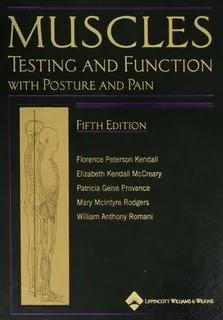Zach,
Good stuff here. About to read part two, but my question for you is whether you now perform breakout assessments (Joint ROM testing, muscle strength, etc) as part of your typical evaluation?
This is troubling for me in terms of assessment because we only look at these things currently if we see a problem in the FMS with our athletes.
Thanks for the heads up on this and I hope to get some more food for thought from your second piece.
Best,
Chris
http://modelfit1.blogspot.com/
Chris
Thanks for the comment. When I find deficits, pain, etc. I do go into a deeper evaluation. I can't do this with everyone because it would take forever. Just screening the 35-40 kids I have now with my personal screen takes me over a week to complete. Understand that I have added quite a bit to the standard FMS screen to look at our personal needs. To be honest when an athlete doesn't present a problem with our initial evaluation, then we really have no basis to go much deeper. Obviously we have exceptions with kids that have been previously injured, or have previously had issues that we will have to keep an eye on.
An example may be an athlete with pain during some of our shoulder evaluation. If he has pain then obviously we go deeper to see if we have a solution and/or look to finding the culprit. On a side note, the book Muscles: Testing and Function, with Posture and Pain by Kendall is the best out there at manual muscle testing methods, evaluation, and treatment of postural imbalances.
A quick example of the lower body may include problems with the overhead squat, or lunge patterns. If problems are present here then we delve further into testing the hip flexors as well as ankle complex.
However, to answer your last question, if we don't have problems throughout our initial screening, which I feel covers the surface of virtually everything, then we for the most part we don't delve any deeper. If an athlete's movement patterns are solid without deficiency, deficit, or pain, then we move on. We could test and test and test for days and say the glute medius on the right side is 10% weaker than the left, etc., etc., etc., but at some point we have to get to the actual work of increasing sports performance. If it isn't present during their actual movement, then it probably isn't presenting them with a problem. I actually believe that more times than not a soundly structured program whether individualized or not will clean up a large part of movement issues.
I view the shoulder a bit differently especially with baseball players, so that's why we do a gross screen for the shoulder as well as look at a lot of specific issues. But we still only go deeper if there presents a need. I'm not going to test an athlete for a SLAP tear, or internal impingement if they show no reason for the test.
Obviously, with movement the nervous system plays a vital role. Gray Cook's recent material talks a lot about this fact, and Vladimir Janda's work in this area was paramount. A reader just sent me an article last night that I will post in the next few days on Janda. In it the author states this of Janda's beliefs:
In the simplest terms, it all boils down to the nervous system. The coordination of afferentation, central organization of neural data, and efferentation was paramount to the quality of function. To him, joint function was dependent on muscle function, which was dependent on nervous system function, although each of these factors was at times interdependent. A reader of these words who studied with Janda could easily find fault, because he emphasized so many other aspects that could lead to dysfunction and subsequent pain.

